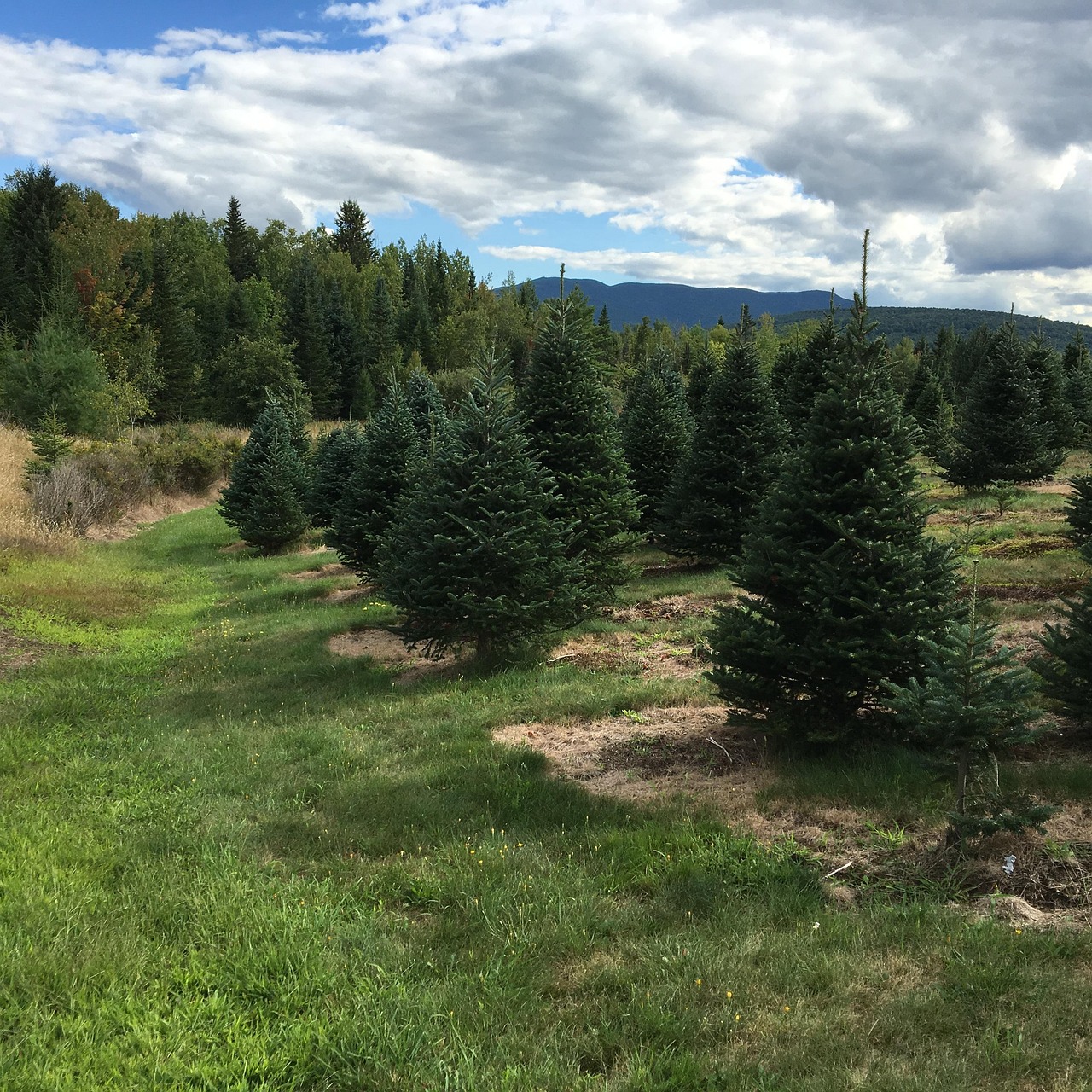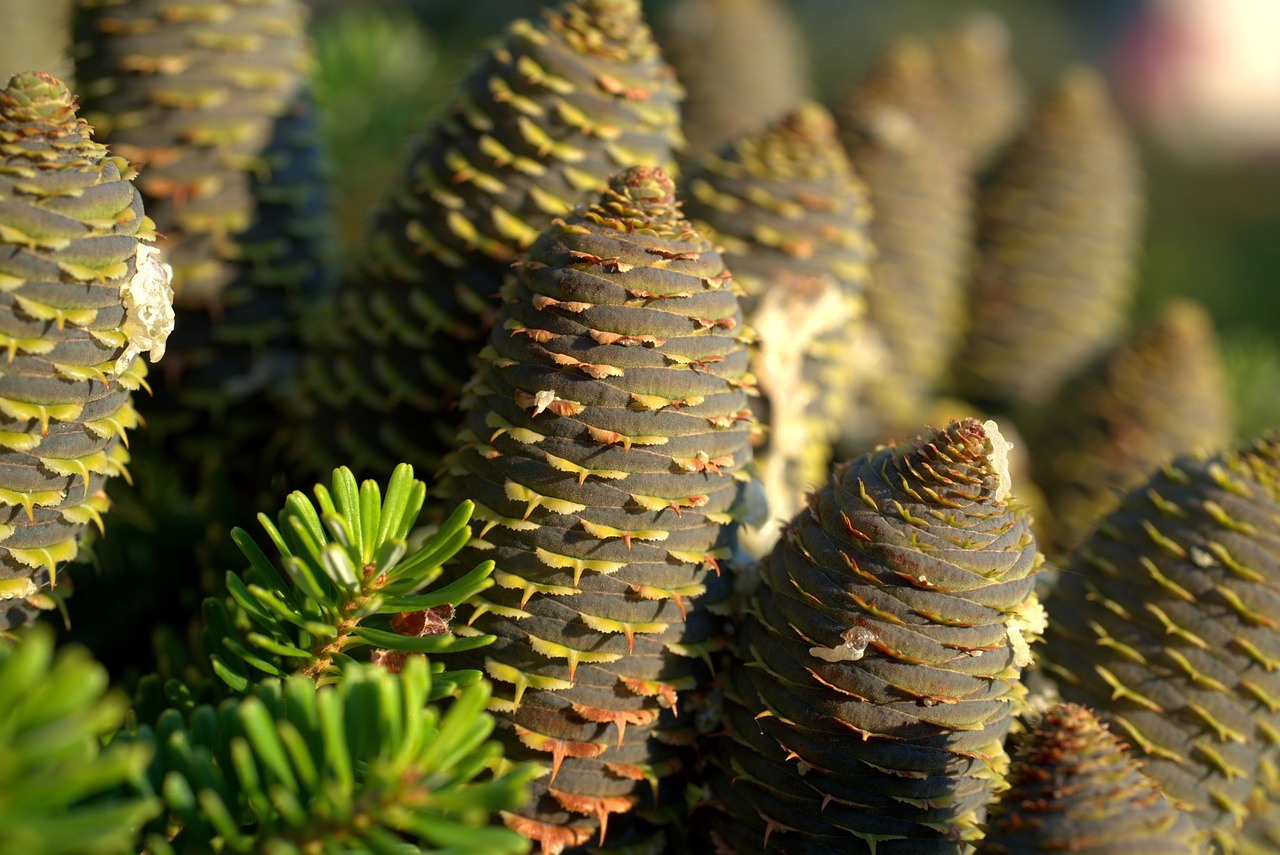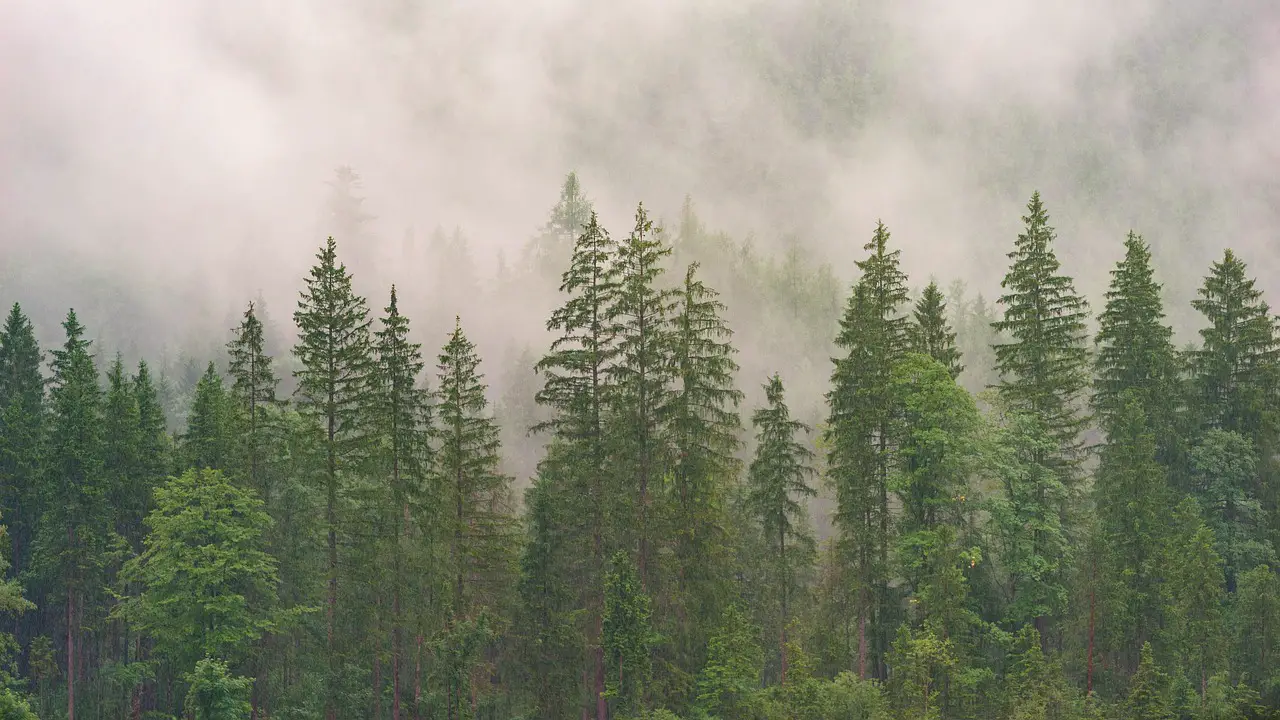Balsam fir trees are not well-suited to survive in Florida’s climate. These trees thrive in cooler, mountainous regions with well-drained soils and moderate humidity. Florida’s hot, humid conditions and sandy soils present significant challenges for their growth and health.
Understanding Balsam Fir Trees

Balsam fir (Abies balsamea) is a coniferous tree native to North America. It predominantly grows in the northeastern United States and parts of Canada. This tree is popular for its fragrant needles and is often used as a Christmas tree. Balsam firs can reach heights of 40 to 60 feet and have a narrow, pyramidal shape. Their dark green needles are soft to touch, and they produce small cones that add to their aesthetic appeal.
One of the reasons balsam fir trees are cherished is their adaptability to cold climates. They thrive in regions with cold winters and cool summers, which allow them to flourish. However, their survival is heavily dependent on specific environmental conditions, which Florida does not provide.
Climate Preferences of Balsam Fir Trees
Balsam firs prefer cool, moist climates with a temperature range that rarely exceeds 80°F. They thrive in USDA hardiness zones 3 through 6. The ideal conditions for these trees include:
- Cold winters with significant snowfall
- Moderate summer temperatures
- Consistent moisture in the soil
- Well-drained, acidic soils
In contrast, Florida’s climate is characterized by hot summers and mild winters, with temperatures often exceeding 90°F during the summer months. This heat can cause stress to balsam fir trees, making it difficult for them to survive in such an environment.
The Challenges of Florida’s Climate
Florida presents several challenges for balsam fir trees that can hinder their growth and overall health:
- High Temperatures: The extreme heat in Florida can lead to heat stress, which may cause needle drop and stunted growth.
- Humidity Levels: While balsam firs prefer some humidity, Florida’s high humidity can promote fungal diseases that can devastate these trees.
- Sandy Soils: Balsam firs require well-drained, loamy soils rich in organic matter. Florida’s sandy soils do not hold moisture well, making it challenging for these trees to access the water they need.
- Pests and Diseases: Florida’s warm climate supports a variety of pests that can attack balsam firs, including aphids and bark beetles.
The Role of Soil Conditions
The type of soil in which balsam fir trees are planted plays a crucial role in their growth. Ideally, these trees thrive in:
- Soils that are acidic (pH between 5.0 and 6.5)
- Soils that are rich in organic material
- Well-drained soils to prevent root rot
Florida’s predominantly sandy soils often do not meet these requirements. The lack of organic matter can lead to poor nutrient availability for the trees. Furthermore, the drainage properties of sandy soils can lead to either drought conditions or over-saturation during heavy rains, both of which are detrimental to the health of balsam firs.
Alternatives to Balsam Fir Trees in Florida
If you are interested in planting coniferous trees in Florida, there are several alternatives that are better suited for the climate:
- Loblolly Pine (Pinus taeda): A fast-growing pine that thrives in Florida’s climate.
- Longleaf Pine (Pinus palustris): A native species that is well-adapted to sandy soils and drought conditions.
- Slash Pine (Pinus elliottii): Another native pine that grows well in wetland areas.
Choosing trees that align with Florida’s environmental conditions will ensure better growth and sustainability. Understanding the local climate and selecting appropriate species is essential for successful gardening and landscaping efforts.
Understanding Florida’s Unique Climate
Florida’s climate is classified as humid subtropical, which greatly influences the types of trees that can thrive there. This climate is characterized by hot, humid summers and mild winters. The average annual temperature in Florida ranges from 60°F to 80°F, with peak summer temperatures often exceeding 90°F. Understanding these climatic conditions is vital for selecting appropriate tree species.
Additionally, Florida experiences a distinct wet and dry season. The wet season typically runs from May to October, bringing heavy rainfall and thunderstorms. In contrast, the dry season spans from November to April, during which rainfall is scarce. This variability can create stress for trees not adapted to such extremes.
Soil Types and Their Impact on Tree Growth
The soil in Florida varies significantly across the state. Most regions have sandy soils, which present both advantages and challenges for tree growth. Sandy soils drain quickly, preventing waterlogging but can also lead to drought conditions if not properly managed.
Characteristics of Sandy Soils
- Excellent Drainage: Sandy soils allow for fast drainage of water, reducing the risk of root rot.
- Poor Nutrient Retention: These soils often lack essential nutrients, requiring regular amendments for optimal tree growth.
- Acidic pH Levels: Many sandy soils in Florida are acidic, which may not support all tree species.
To cultivate healthy trees in sandy soils, it is crucial to incorporate organic matter, such as compost or mulch. This addition helps improve nutrient retention and moisture availability.
Choosing the Right Species for Florida’s Climate
Selecting trees that are native or well-adapted to Florida’s conditions ensures better success rates in growth and sustainability. In addition to the previously mentioned alternatives to balsam firs, here are other species that thrive in Florida’s unique environment:
Native Trees
- Southern Magnolia (Magnolia grandiflora): Known for its large, fragrant flowers and glossy leaves, this tree is a staple in southern landscapes.
- Live Oak (Quercus virginiana): A majestic tree that provides ample shade and supports local wildlife.
- Red Maple (Acer rubrum): This tree showcases stunning fall colors and adapts well to various soil types.
Considerations for Tree Selection
When choosing trees for planting in Florida, consider the following factors:
- Climate Compatibility: Ensure that the species can tolerate local temperature extremes and humidity levels.
- Soil Requirements: Assess the soil type where you plan to plant and choose species that thrive in similar conditions.
- Pest Resistance: Select trees that are less susceptible to local pests and diseases.
- Growth Rate: Consider whether you prefer fast-growing species or those with a slower growth rate.
The Benefits of Planting Native Tree Species
Planting native trees in Florida offers several ecological and aesthetic benefits:
- Support Wildlife: Native trees provide habitats and food sources for local wildlife, including birds and insects.
- Lower Maintenance: Native species typically require less water and fertilizer compared to non-native varieties.
- Biodiversity Promotion: By planting native trees, you contribute to maintaining the region’s biodiversity.
- Aesthetic Appeal: Native trees often have beautiful flowers and foliage that enhance landscape beauty.
Understanding Florida’s unique climate and soil conditions is crucial for selecting suitable tree species. By choosing native or well-adapted trees, you can ensure a thriving landscape that complements the state’s natural environment.
Caring for Trees in Florida’s Climate

Caring for trees in Florida requires specific practices to ensure their health and longevity. Here are some essential care tips:
- Irrigation: During dry spells, ensure trees receive adequate water without overwatering. Drip irrigation systems can help maintain moisture levels.
- Mulching: Applying mulch around the base of trees helps retain moisture and suppress weeds.
- Pest Management: Regularly inspect trees for signs of pests or diseases. Employ integrated pest management strategies if needed.
- Fertilization: Use slow-release fertilizers formulated for native plants to provide necessary nutrients without harming the ecosystem.
By following these care practices, you can create an environment where trees can thrive despite Florida’s challenging climate conditions.
Environmental Factors Affecting Tree Growth

The survival and health of trees, including those suitable for Florida’s climate, are greatly influenced by environmental factors. Understanding these factors can help in selecting the right species and implementing effective care strategies.
Temperature Variability
Temperature plays a crucial role in tree growth. In Florida, the temperature can vary significantly between seasons. While most tree species can tolerate mild fluctuations, extreme temperatures can lead to stress.
- Heat Stress: Prolonged periods of high temperatures can cause leaf scorch, reduced growth, and increased susceptibility to pests.
- Frost Events: Although rare, late frosts can damage new growth and flowers, impacting overall tree health.
Understanding the temperature thresholds for specific tree species is essential for proper selection and care. Native species are generally more resilient to Florida’s temperature extremes.
Humidity Levels
Humidity in Florida can reach high levels, especially during the summer months. While some trees thrive in humid conditions, others may struggle:
- Fungal Diseases: High humidity creates a conducive environment for fungal infections, which can affect the health of trees.
- Pest Activity: Many pests thrive in humid environments, increasing potential infestations.
Regular monitoring and proactive pest management strategies are vital to mitigate these issues.
Water Availability and Its Importance
Water availability is another critical factor affecting tree health. Florida’s wet and dry seasons lead to fluctuating moisture levels in the soil, which can impact tree growth:
Managing Water Supply
- Irrigation Techniques: Efficient irrigation systems, such as drip irrigation, help provide consistent moisture levels without water wastage.
- Rainwater Harvesting: Collecting rainwater can be a sustainable way to supplement irrigation during drier months.
- Soil Moisture Monitoring: Using soil moisture sensors can help determine when trees require water, preventing overwatering or drought stress.
Maintaining adequate moisture levels is crucial for root development and overall tree vitality.
Soil Health and Tree Growth
The health of the soil directly influences the growth and sustainability of trees. Soil quality can affect nutrient availability, drainage, and overall plant health.
Improving Soil Conditions
To enhance soil health for tree planting in Florida, consider the following practices:
- Add Organic Matter: Incorporating compost or well-rotted manure improves soil structure, nutrient content, and moisture retention.
- Regular Soil Testing: Conducting soil tests helps identify nutrient deficiencies and pH levels, allowing for targeted amendments.
- Avoid Compaction: Preventing soil compaction by minimizing foot traffic around tree roots promotes healthy growth.
Healthy soil supports robust root systems, crucial for tree stability and nutrient uptake.
Pest and Disease Management
Florida’s warm climate fosters a variety of pests and diseases that can threaten tree health. Being proactive in pest management is essential for maintaining healthy trees.
Common Pests in Florida
- Bark Beetles: These insects bore into the bark of trees, causing significant damage and potentially leading to tree death.
- Aphids: Small sap-sucking insects that can weaken trees and transmit viral diseases.
- Caterpillars: Various species can defoliate trees, impacting their ability to photosynthesize.
Disease Prevention Strategies
Implementing disease prevention strategies is critical for sustaining tree health:
- Cultural Practices: Proper spacing between trees improves air circulation, reducing humidity around foliage.
- Pesticide Use: Applying integrated pest management (IPM) techniques minimizes chemical use while effectively controlling pest populations.
- Regular Inspections: Frequent checks for signs of pests or diseases enable early intervention and treatment.
A proactive approach to pest and disease management can significantly enhance the survival rates of trees in Florida’s climate.
The Role of Community and Education
A strong community effort can enhance tree planting initiatives in Florida. Engaging with local organizations can provide valuable resources and support for those interested in planting trees.
Community Involvement Opportunities
- Tree Planting Events: Participating in community tree planting days helps increase local green spaces while fostering community spirit.
- Workshops and Seminars: Educational events focused on tree care and environmental stewardship promote awareness and knowledge sharing.
- Partnerships with Local Nurseries: Collaborating with nurseries can provide access to native plants and expert advice on suitable species for local conditions.
This collective effort not only enhances the urban landscape but also contributes positively to the environment by promoting biodiversity and ecosystem health.
Ecological Benefits of Tree Planting
Tree planting initiatives in Florida not only enhance the aesthetic appeal of landscapes but also provide numerous ecological benefits. Trees play a crucial role in maintaining ecological balance, supporting wildlife, and improving air quality. Below are some key ecological advantages of increasing tree cover:
- Carbon Sequestration: Trees absorb carbon dioxide from the atmosphere, helping to mitigate climate change by reducing greenhouse gases.
- Habitat for Wildlife: Trees provide essential habitats and food sources for various species of birds, insects, and mammals, promoting biodiversity.
- Soil Erosion Prevention: The root systems of trees help hold soil in place, reducing erosion and maintaining soil health.
- Improved Air Quality: Trees filter pollutants from the air, including dust, smoke, and carbon monoxide, contributing to cleaner air.
- Water Conservation: Trees help manage the water cycle by absorbing rainfall, thus reducing runoff and promoting groundwater recharge.
By planting more trees and maintaining healthy urban forests, communities can significantly impact their local environments, making them more resilient to climate change and promoting overall ecological health.
Encouraging Sustainable Practices
As Florida faces unique environmental challenges, adopting sustainable practices in tree planting and care becomes increasingly important. Here are some sustainable approaches that can be implemented:
Native Plant Landscaping
Utilizing native plants in landscaping helps maintain local ecosystems and reduces the need for chemical fertilizers and pesticides. Native plants are adapted to local soil and climatic conditions, requiring less water and care compared to non-native species.
Organic Gardening Techniques
Implementing organic gardening techniques can improve soil health while minimizing environmental impact. Techniques include:
- Composting: Recycling organic waste into nutrient-rich compost enhances soil fertility.
- Natural Pest Control: Using beneficial insects and natural deterrents can effectively manage pest populations.
- Crop Rotation: Rotating plant species can prevent soil depletion and reduce pest issues.
Community Education Programs
Education is vital for promoting sustainable practices within the community. Workshops on tree care, sustainable gardening, and environmental stewardship can empower individuals and groups to make informed decisions regarding their landscapes. Engaging schools in these programs fosters a sense of responsibility toward nature among younger generations.

Final Thoughts
Balsam fir trees are not well-suited for Florida’s climate due to the state’s hot and humid conditions. While these trees thrive in cooler regions, their growth in Florida would likely be challenged by high temperatures, poor soil conditions, and increased pest pressures. However, understanding the unique aspects of Florida’s environment allows residents to choose alternative tree species that are better adapted to local conditions.
By focusing on native trees and sustainable practices, communities can enhance their landscapes while supporting local ecosystems. Engaging in tree planting initiatives not only beautifies urban areas but also contributes significantly to environmental health through carbon sequestration, habitat creation, and improved air quality.
In conclusion, while balsam fir trees may not be a viable option for Florida’s climate, the emphasis on community involvement, education, and sustainable practices opens up opportunities for residents to create thriving green spaces. With careful planning and consideration, Florida’s landscapes can flourish with appropriate tree species that enrich both the environment and community life.
